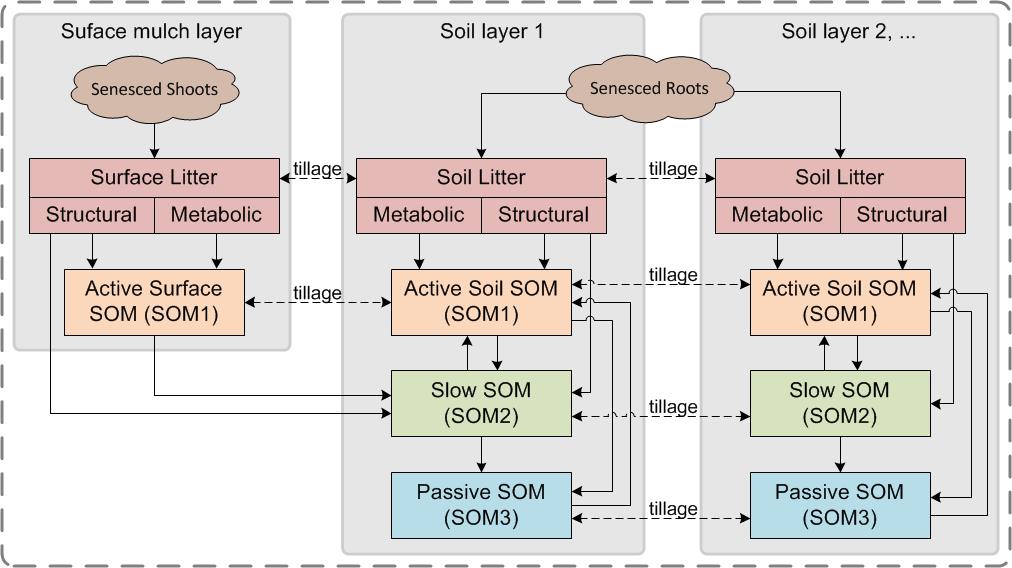
The Century organic matter module maintains three soil organic matter (SOM) pools and two pools of fresh organic matter (FOM or litter) both in and on top of the soil:
• SOM1—microbial or active material,
• SOM2—recalcitrant material (e.g., derived from lignin, cell walls), decomposed SOM1 and stabilized microbial material (e.g., microbes that are physically protected by the soil structure), and
• SOM3—the largely inert material and stabilized microbial material.
• Metabolic litter—easily decomposable fresh residue (e.g., proteins, sugars),
• Structural litter—recalcitrant fresh residue (e.g., lignin, cell walls).
Decomposition occurs on the order of days for SOM1 and the two litter components; years for SOM2; and hundreds of years for SOM3. Organic nitrogen and phosphorus contents are maintained in each organic matter pool for both surface and soil layers.
With decomposition of metabolic litter, C moves to the pool of active (microbial) SOM1, which exists in both the surface layer and in the soil. The easily decomposable portion of structural litter becomes part of the surface or soil SOM1 while the fibrous fraction becomes part of the intermediate SOM2 pool, which only exists in the soil.
Surface or soil SOM1 decomposes into SOM2, and the soil SOM1 also decomposes into passive SOM3.
The SOM2 decomposes into SOM3 or can be reactivated as soil SOM1; the SOM3 can also be reactivated as soil SOM1.
All these processes are accompanied by a loss of CO2 and by either mineralization or immobilization of N, depending on the C/N ratio of the decomposing material and the mineral N available for immobilization.
Decomposition rates are calculated as the potential decomposition rate multiplied by temperature and water factors and also involve factors for soil texture and cultivation, of which the latter is used to accommodate an increase decomposition after soil disturbance. Soil texture directly affects SOM and residue decomposition rates.
This material was adapted from:
Gijsman, A.J., G. Hoogenboom, W.J. Parton, P.C. Kerridge. 2002. Modifying DSSAT crop models for low-input agricultural systems using a soil organic matter-residue module from CENTURY. Agron. J. 94:462–474 (2002).
